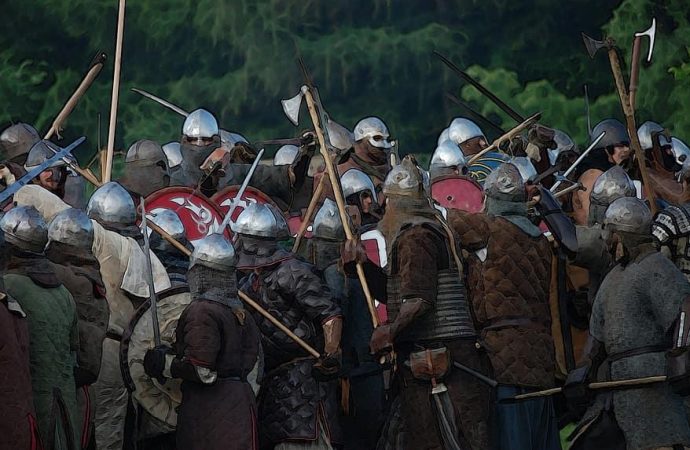In the public imagination, the Vikings were closely-related clans of Scandinavians who marauded their way across Europe, but new genetic analysis paints a more complicated picture.
Source: UPI.com
For the last six years, researchers in Britain and Denmark have been sequencing and analyzing DNA from more than 400 Viking skeletons recovered from dig sites across Europe and Greenland.
The data, published Wednesday in the journal Nature, suggests Vikings were more genetically diverse than researchers thought.
“We have this image of well-connected Vikings mixing with each other, trading and going on raiding parties to fight kings across Europe, because this is what we see on television and read in books — but genetically we have shown for the first time that it wasn’t that kind of world,” lead researcher Eske Willerslev said in a news release.
“This study changes the perception of who a Viking actually was — no one could have predicted these significant gene flows into Scandinavia from Southern Europe and Asia happened before and during the Viking Age,” said Willerslev, a professor of evolutionary genetics at Cambridge University.
The so-called Viking Age begins with the earliest record of a Viking raid, dated to 800 A.D. The age lasted through the 1050s. During that time, Vikings raided monasteries and coastal cities, but also engaged in less violent activities, trading fur, tusks and seal fat.
Researchers knew the Vikings altered the political and economic landscape of Europe. In the 11th century, a Viking, Cnut the Great, ascended to the thrown of the North Sea Empire, comprising Denmark, England and Norway. But until now, researchers weren’t really sure what the Vikings looked like, genetically speaking.
“We found genetic differences between different Viking populations within Scandinavia which shows Viking groups in the region were far more isolated than previously believed,” said Willerslev, director of the Lundbeck Foundation GeoGenetics Center at the University of Copenhagen.
“Our research even debunks the modern image of Vikings with blonde hair as many had brown hair and were influenced by genetic influx from the outside of Scandinavia,” he said.
The DNA recovered from Viking burial sites showed raiding parties from what’s now Norway traveled to Ireland, Scotland, Iceland and Greenland, while groups from what’s now Sweden traveled to Baltic countries.
“We discovered that a Viking raiding party expedition included close family members as we discovered four brothers in one boat burial in Estonia who died the same day,” said study co-author Ashot Margaryan.
“The rest of the occupants of the boat were genetically similar suggesting that they all likely came from a small town or village somewhere in Sweden,” said Margaryan, an assistant professor of evolutionary genomics at the University of Copenhagen.
Researchers also found evidence that local people in Scotland, Celtic-speaking people known as Picts, adopted Viking identities and were buried as Vikings, but never genetically mixed with Scandinavians.
The DNA sequencing efforts showed Viking populations in Scandinavia continued to receive genetic inflows from throughout Europe during the Viking Age.
“Individuals with two genetically British parents who had Viking burials were found in Orkney [Scotland] and Norway,” said Daniel Lawson, lead author from the University of Bristol in Britain. “This is a different side of the cultural relationship from Viking raiding and pillaging.”
Source: UPI.com

































Leave a Comment
You must be logged in to post a comment.